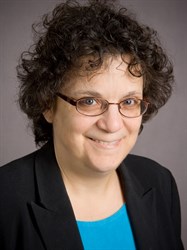Government
Operation Warp Speed for rare diseases: CBER leader says pilot is coming soon
The next generation of Operation Warp Speed is coming soon, and this time it’s going to take aim at rare diseases, Peter Marks, the director of the FDA’s…

The next generation of Operation Warp Speed is coming soon, and this time it’s going to take aim at rare diseases, Peter Marks, the director of the FDA’s Center for Biologics Evaluation and Research, told attendees of the Biopharma Congress in Washington, DC on Monday.
“We’re getting ready to pilot that program,” Marks said, making clear the goal is to help areas with high unmet needs.
I think the goal is to take a drug with some promise in the rare disease space for diseases that don’t have alternatives … and then take these products, maybe they have breakthrough or advanced therapy designation, they have promise and there is a product in development and not just a concept. And then give them the opportunity with not just chemistry, manufacturing and controls, which we have a pilot for, but allow the clinical development to happen in constant communication and sharing of potential results before a submission of an NDA or BLA. That’s the idea, is to move things as fast as possible.
He said “it’s not unlikely in some of these rare disease situations that there will be hiccups” and if those FDA-sponsor conversations can occur in real time, they can resolve those issues more quickly.
 Celia Witten
Celia WittenMarks stressed that he trusts his deputy Celia Witten to find new talent for the FDA’s retiring leadership as the agency transitions from its Office of Tissues and Advanced Therapies to the super-office to be known as the Office of Therapeutic Products, or OTP.
He also explained how he’s looking into using a Project Orbis-like approach to expanding the approval of gene and cell therapies throughout other high-income countries (e.g. UK, Japan, EU) as the FDA’s Oncology Center of Excellence currently does for some new cancer drugs and indications.
“And we want to take it one step further for these rare diseases. For vaccines, there’s WHO-prequalification, which is basically, WHO says this vaccine has been licensed in a reference country, it’s good enough for us, it should be good enough for you, and the idea is to quickly do that for gene therapy so lower-income countries could potentially make use of these approvals. Why is that important? For some gene therapies, the only way people will get treatment is if they get gene therapy because those countries cannot afford supportive care, for instance,” Marks said, noting that “there may be ways to deal” with some of the massive upfront costs.
When asked why there has been an increase in clinical holds from CBER, Marks noted multiple causes including an increase in clinical trials, less experienced sponsors in this cell and gene therapy space, and
we see a variety of different type of INDs, some of which are missing key pieces, and sometimes those can be fixed with interactive discussions during the 30 days. But 30 days is not a lot of time if someone doesn’t have a manufacturing section to their IND [laughter in the audience] — don’t laugh, don’t laugh, it happens enough, we have a rule of threes that I wouldn’t tell you about it if it didn’t happen at least three times … There are some cases where we have bona fide sponsors who have issues that probably could be resolved with interactive review where we just don’t have the bandwidth.
OTP is looking to bring on about 125 new staffers to help with the cell and gene therapy reviews thanks to the latest iteration of the user fee deals, but the market for talent is fiercely competitive.
 FDA’s outgoing OTAT director Wilson Bryan recently announced his intent to retire but told Endpoints News on Monday that he’s looking forward to the next challenge, and wanted to hand off the reins of the office to the next set of incoming leadership as the transition happens.
FDA’s outgoing OTAT director Wilson Bryan recently announced his intent to retire but told Endpoints News on Monday that he’s looking forward to the next challenge, and wanted to hand off the reins of the office to the next set of incoming leadership as the transition happens.
Looking ahead, Bryan expressed candid fears that the agency may not end up pulling cell or gene therapies quickly when approved under the accelerated pathway, and even when there might be not enough evidence of efficacy from the confirmatory trial.
He said he does think the accelerated pathway, which has only been used once so far for a cell/gene therapy, will be frequently used and that the confirmatory studies could take years to confirm benefit, especially if it’s a slowly developing disease.
“We’re going to get into trouble with accelerated approval for gene therapies if it takes years to tell us if something works,” Bryan said. “Because then that means it takes years to tell us if it doesn’t work.”

Here Are the Champions! Our Top Performing Stories in 2023
It has been quite a year – not just for the psychedelic industry, but also for humanity as a whole. Volatile might not be the most elegant word for it,…
AI can already diagnose depression better than a doctor and tell you which treatment is best
Artificial intelligence (AI) shows great promise in revolutionizing the diagnosis and treatment of depression, offering more accurate diagnoses and predicting…
Scientists use organoid model to identify potential new pancreatic cancer treatment
A drug screening system that models cancers using lab-grown tissues called organoids has helped uncover a promising target for future pancreatic cancer…













